#nymphaea caerulea
Explore tagged Tumblr posts
Text

Set - God of Chaos
#my art#you can reblog this#set egyptian god#egyptian gods#ancient egypt#ancient history#egyptology#egyptian mythology#egyptian#egypt#nymphaea caerulea#plants#aquatic plants#blue lily#blue lotus#egyptian blue lotus#pond plants#medicinal plants
65 notes
·
View notes
Text


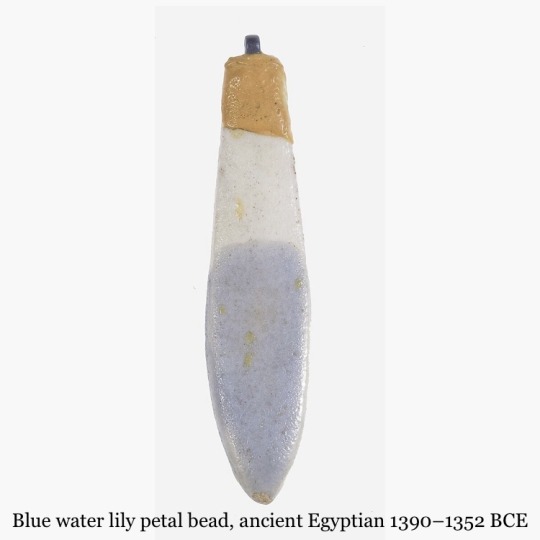
Ancient Egyptian mural detail from the Tomb of Menna, circa 1400-1352 BCE. A woman is holding water lily flowers, wearing a collar necklace of water lily petal beads (like the ones shown below) and a headdress of water lily petals with a water lily flower at her forehead with a mandrake fruit in its centre. On top of her head is a perfumed ointment cone likely scented with water lily.
The ancient Egyptians associated water lilies with purification, dawn, the underworld, and resurrection. They used water lilies for food, medicine, perfume, intoxication, pleasure, ritual, and spiritual purification. They used two water lilies: the day blooming “blue lotus” (Nymphaea nouchali var. caerulea) and the night blooming “white lotus” (Nymphaea lotus). Nefertem, the water lily god, was deity of the dawn of the universe and of each new day. Water lilies are featured in the famous Book of the Dead and the flowers, buds, and petals were used as funerary garlands to adorn the dead.
#bane folk#blue lotus#water lily#ancient egypt#nymphaea caerulea#nymphaea nouchali var caerulea#nymphaea lotus#water lilies#ethnobotany
41 notes
·
View notes
Text

The Lily of the Nile: A work on the ritualistic use of an ancient flower of immortality
“In pharaonic times, religion, magic and medicine had little distinction between each other due to the commonly held belief that all parts of life were influenced and even controlled by divinity and the supernatural. To navigate life easier, and in true Egyptian fashion, a large corpus of text was composed of magic, medicine and religion. The latter includes the arguably most well-known work, the Egyptian Book of the dead, the religious scripture that would help the deceased navigate the netherworld in the hopes for eternal life. The papyri depict numerous plants and remedies as well as spell and healing methods accompanied by magical incorporation such as incantation or invocation of a god or goddess. These can be considered a basis for the fundamental ideas of religion and daily life of ancient Egypt, always consisting of divine involvement. This essay will deal with a symbol that the ancient Egyptians saw as synonymous with life, and immortality: The narcotic blue water lily, Nymphaea Caerulea. The study will be a work on the human religious experience with a plant that I will theorize as having been used for an entheogenic effect in order to connect with the divine by asking some key questions: How and why was the lily used? How is the flowers depiction on art, in texts, and different iconography indicative to a usage in religious experience and through the mythology produced in the civilisation?”
#Ancient Egypt#Nymphaea Caerulea#The Lily of the Nile#Blue Water Lily#Blue Lotus Flower#Religion#Magic#Medicine#Entheogenic Research#Ancient Entheogenic Alchemy
5 notes
·
View notes
Text


#water lily#egyptian lotus#nymphaea caerulea#aquatic plants#greenhouse#linnaean gardens#botanic garden#uppsala#sweden
3 notes
·
View notes
Video
n440_w1150 by Biodiversity Heritage Library Via Flickr: Flore des serres et des jardins de l'Europe A Gand :chez Louis van Houtte, eÌditeur,1845-1880. biodiversitylibrary.org/page/27559991
#Missouri Botanical Garden#Peter H. Raven Library#bhl:page=27559991#dc:identifier=https://biodiversitylibrary.org/page/27559991#Nymphaea scutifolia#Nymphaea nouchali var. caerulea#Nymphaea nouchali#blue#lotus:#blue lotus#star lotus#red water lily#dwarf aquarium lily#blue water lily#blue star water lily#manel flower#flickr
3 notes
·
View notes
Text
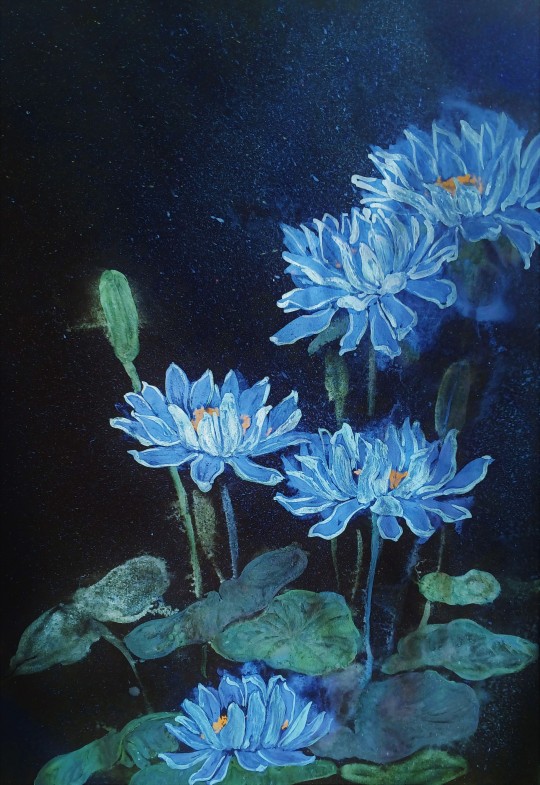
Making Love With The Moon
Watercolor on Black Cotton Paper
2023, 24"x 34"
Blue Waterlilies, Nymphaea caerulea
Private Collection -Fort Collins, Colorado
#artists on tumblr#art#nature#flowers#floral#watercolor#painting#minimalism#water#waterlily#waterlilies#purple#blue#green#water lily#water plants#aquatic plants#plants#minimal#artblr#artwork#pond#cottagecore#contemporary art#cottagecore aesthetic#garden#naturecore
4K notes
·
View notes
Text

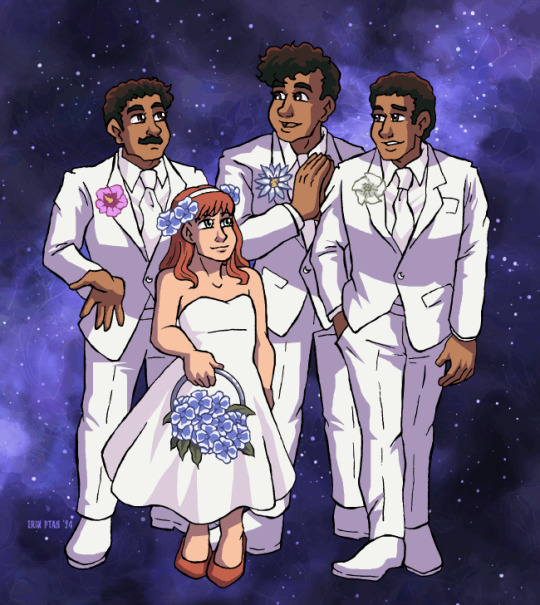
Headmates in the Moon Knight wedding party! Inner Child finally gets to be flower girl.
Two color variants, since I can't decide which I like better -- black suits, or white suits?
Everyone's flowers: Jake - rose mallow (Hibiscus syriacus), Ruby - bigleaf hydrangea (Hydrangea macrophylla), Steven - Egyptian blue water lily (Nymphaea caerulea), Marc - moonflower (Datura innoxia)
#Moon Knight#Moon Knight fanart#Jake Lockley#Steven Grant#Marc Spector#Moon Knight Inner Child#FullMoon#MarcStevenJake#MoonMoonMoon#wedding#Ptah's fanart
28 notes
·
View notes
Text

For @thiamsxbitch @teenwolfholidayfest
Nymphaea caerulea: These Wretched Waters Never Waver
The light never meets the dark and the dark never meets the light. While out patrolling and gathering herbs, Alec’s little wandering self goes too far while Liam is distracted. Upon realizing, Alec has been too quiet Liam finds him on the edge of the mystic river. Scott has always told him not to go near it, not only is it in the dark region, but one touch and you’ll lose your fae powers forever, forgetting you were ever a fae. Isaac likes to tell him scary stories about it. About a princess who took her life in this river after her other half was brutily murdered by a dark fae.
When Liam finally finds him, he tells him to get low. Just nearby the Dark Queen guards were doing their own patrol. Alec stays hidden where they can't see him, but the guards had already heard them. Liam tells Alec that no matter what happens he doesn't come out until its safe.
The guards spot Liam’s glow, but Alec hidden in the dark is unseen. Alec watches from his hiding spot as Liam is accosted and thrown into a faerie cage before he is taken to the Dark Castle.
#these wretched waters never waver#fae thiam#thiam au#teen wolf#thiam#theo raeken#liam dunbar#liam is light fae#Theo is dark fae#soulmates#I'm not sure I like this#Im thinking about doing a different one#anyway#fic and fanart coming soon#teenwolfholidayfest
27 notes
·
View notes
Text
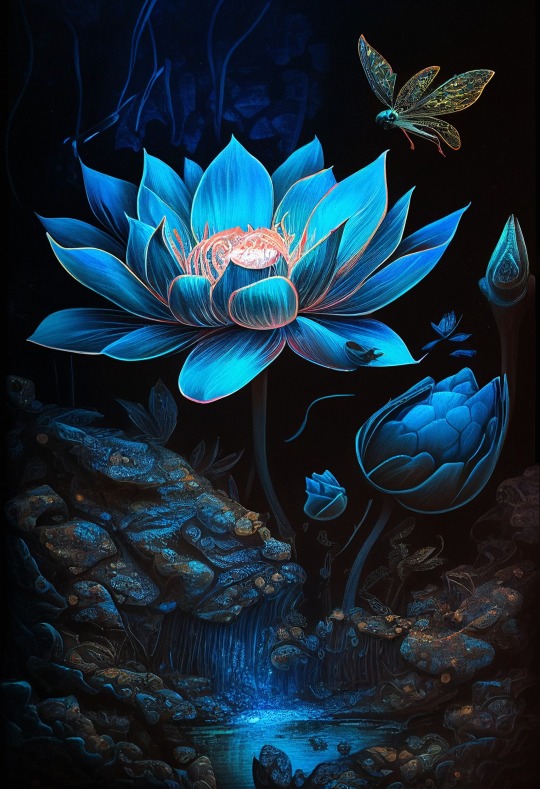
Blue Lotus: Flower of Intuitive Ascension
Blue Lotus (Nymphaea caerulea) is a beautiful, water-dwelling flower with mild psychoactive properties. Sacred to the Ancient Egyptians, depictions of Blue Lotus flower are ubiquitous in Egyptian art. Though alluring to our modern imaginations and worth further investigation, Blue Lotus is rarely used in Western herbalism as it is not currently a well-understood plant, nor is it native to or abundant in North America.
Etymology & Botany Blue Lotus is a tropical, aquatic plant in the Water Lily family that features day-blooming, light blue flowers which sit on the water’s surface. Long petioles connect the visible leaves with the deep, underwater rhizomes. The star-shaped flowers typically bloom for 3-5 days, moving with the sun and closing at night; Ancient Egyptians noticed this solar attunement and believed the flower’s golden center to be where the sun god, Ra, emerged from. All parts of the Blue Lotus plant (flowers, leaves, rhizomes, petioles) can be used medicinally.
Traditional Uses Once naturally abundant and extensively cultivated in temple lakes and along the Nile River, Blue Lotus was a highly revered and sought after crop. It was exported throughout the Mediterranean, Greece, the Middle East, Tibet, and as far as the Alexandrian empire extended.
Origin While it’s rare to find this flower growing along the Nile now, it is native to northern and central Africa. Ancient Egytian temples and monuments are a testament to how well loved this emblematic flower was to their culture; Blue Lotus can be seen embossed on everything from thrones to calcite drinking chalices to papyrus. The herb was used ceremonially but was also made into cosmetics and perfumes; imbibed as a tea or elixir; and simply inhaled for its relaxing, intoxicating fragrance. The flowers and buds were often used recreationally as well, for their narcotic and aphrodisiac effects.
Spiritual History In addition to being the birthplace of the sun god, Ra, this herb came to be associated with the afterlife and rebirth in Egyptian culture, specifically the Osiris myth. Brought back to life by the assistance of his sister and wife, Isis, Osiris became a symbol of life after death and rebirth through the legacy of Egyptian royalty. Thus, this herb was also considered to be the symbol of royalty and rulers, and indeed many royal accoutrement featured depictions of the flower; King Tutankhamun’s mummy was found covered with dried Blue Lotus flowers when exhumed hundreds of years later.
Herbal Indications for Blue Lotus Blue Lotus is bitter, aromatic, and warm energetically. In modern, Western herbalism, it is considered a sedative, febrifuge, aphrodisiac, antidepressant, antioxidant, anti-convulsant, and anti-inflammatory herb. It has been successfully used to purify the blood, treat tuberculosis, expel worms and parasites, relieve edema, enhance libido and treat erectile dysfunction, improve lactation, alleviate anxiety and depression, staunch internal bleeding, and balance blood sugar levels. Blue Lotus has a particular affinity for the kidneys, heart, and nervous system.
70 notes
·
View notes
Text
I don't know if this has been talked about elsewhere but while writing Field of Reeds, I've found there's a very interesting amount of mythology and symbolism that ties in between Malenia, Miquella, and ancient Egyptian mythology. I think the concept of different soul parts (ba, ka, akh) is particularly insightful into a potential way to interpret how bodies and souls are referenced in Elden Ring.
One reason I think this may have served as at least some of the inspiration is the relationship between Elden Ring lore and real life mythology, specifically the Golden Order ties to Roman (and greek, irish, norse) mythology but also how those were influenced by ancient egyptian mythology. Miquella's character in particular seems to reflect on the past state of the world pre-Golden Order for inspiration on how to move forward in the future, similar to how the romans looked to ancient egypt in the past.
List of topics:
The Lotus | Trina & Miquella Lilies
Scorpions and Selket | Malenia, Goddess of Rot
Waterfowl, Nekhbet, and the Bennu Bird | Malenia, Blade of Miquella
Shed, Protective Child God | Miquella the Unalloyed
Death and the Soul | Godwyn, Trina, Dreams, and Spirits
The Acacia Tree | The Erdtree & Haligtree
Horus | Miquella the Kind
Hathor | Marika the Eternal
A few disclaimers: There is a vast amount of information on the mythology and there are a lot of contradictions and hotly debated topics within it and I'm no expert, so these will be mostly very surface level comparisons I think may have been used for inspiration, this is not intended to be a declarative comparison. I'll try to keep my sourcing consistent and most references will link back to a single source which compiled a lot of the references together. I did cross-reference these with other sources and will try to call out these additional sources as well as any contradicting opinions where applicable for additional perspective/context.
The Lotus | Trina & Miquella Lilies
Contrary to the name, the flowers referred to as "lotus" are actually two variations of water lilies, a blue and a white variant: Blue Egyptian Water Lily (Nymphaea caerulea) & White Egyptian Water Lily (Nymphaea lotus).


As you can imagine, this immediately caught my interest considering we have two variations of lilies in Elden Ring, Trina's lily (blue/purple) and Miquella's lily (unalloyed gold).
Unalloyed gold is representative of a pure gold and white is often the symbol of purity and that's no different here; additionally, at times white was even used interchangeably with yellow. Meanwhile for blue, you have the common themes of water and rebirth it's associated with but it was also commonly used in funerals. We know that water and this particular blue/purple hue in the game is associated with both dreams and death.
The lotus was also associated with alcoholic intoxication, and it was used as a recreational drug when soaked in wine; the roots and blossoms contain narcotic substances which are soluble in alcohol. It was also used in medicine (the juice has a mild sedative effect).
This last point is interesting in the context specifically of Trina's lilies and works well with my own interpretation of Trina's lilies being used as a sedative which I actually wrote even before stumbling across this fact.
The lotus was a symbol for life: at the very beginning of creation a lotus flower containing the god Ra was the first thing to emerge from the primordial waters. The lotus was strongly associated with the sun, as the flower retreats beneath the water at night and rises again each day at dawn like the sun-god.
As with many symbols of fertility, the lotus was also symbolic of rebirth after death. This again ties in well with the original concept of Miquella/Malenia being Abundance/Decay representing the cycle of death and rebirth.
The Egyptians looked forward to their souls coming to life "like a lotus reopening," and the Book of the Dead has a spell to allow the deceased to transform into one of these flowers. Faience models of lotus buds were sometimes placed in tombs. In many tomb scenes, the deceased is shown with a lotus flower held to his nose in order to breathe in the divine perfume.
Lotus Sources [x][x][x]
Scorpions and Selket | Malenia, Goddess of Rot
Like the lotus/lilies there were two common types of scorpions: a venomous land scorpion and a harmless water scorpion. As such, the scorpion had a dual purpose and could be seen as either friend or foe depending on the context much like how we see the scarlet rot both harms and strengthens Malenia. We also know the Rot God under the lake is at least in part scorpion in nature and thus this is best represented in Selket, the Scorpion Goddess, who is seen as benevolent and is often represented by the harmless water scorpion.

[Continued under the read more]
Scorpions were greatly feared and scorpion stings were one of the main hazards of everyday Egyptian life. Scorpions were described as “A very small thing, a sister of the snake, a sister of Apophis*, sitting at a crossroads, lying in wait for someone who goes in the night . . .”
I believe the scorpion sting serves as an apt representation of the way scarlet rot manifests and which I suspect is clearly intended with the blade crafted from the scorpion stinger of the Rot God sealed beneath the lake of rot.
[* I think there's an interesting parallel between Apophis and the God Devouring Serpent and Rykard but this is already too long, so here's a link about Apophis [x]]
Meaning of Selket: “She Who Causes to Breathe.” Selket's name refers to her power over scorpions, as those who have been stung tend to breathe too fast and too shallow because of the venom.
Another great description which ties in with the Scarlet Rot as it's shown in Elden Ring, specifically through the state of Millicent when we first come across her: slumped against a wall and breathing shallowly because in her words, "My flesh writhes with scarlet rot."
Selket was depicted with a scorpion above her head, as a scorpion, or as a scorpion with a woman's torso. She often had green skin, a reference to her help with regeneration in the Duat.
The last note here caught my attention knowing that Malenia's Great Rune which is covered in Scarlet Rot is what grants her the ability of regeneration. The specific callout of "in the Duat" is also of interest since the Duat is the underworld, meaning she regenerates in death (decay).
Historically, the scorpion was regarded as a symbol of motherhood in many areas, as female scorpions carry their young on their backs. The protective goddess Selket, who guarded the coffin of the deceased, was often pictured as a scorpion. An ancient Egyptian proverb states: “I love the scorpion, yet I know its venomous sting.”
This last passage I find summarizes Malenia's relationship with Rot and Decay fairly succinctly and ties in well with how I've always interpreted rot as the force of decay seeking to reestablish the proper life cycle into the Lands Between which had been forced into a state of stagnation from the removal of Destined Death. But because of the rejection of this rot and decay aspect, Malenia suffers the consequences, the venomous sting of the scorpion rather than the benevolence of it. This cascades down to her "children" as well where rather than accepting the rot and motherhood, she rejects both it and her "children" alike. This is actually very well contrasted by Romina in the DLC who finds strength when she embraces the rot and accepts the role of motherhood to those rejected by Malenia.
And, lastly, the visual of Selket guarding the coffin of the deceased is a striking visual comparison with Malenia in the roots of the Haligtree guarding Miquella's cocoon (his coffin) before it had been taken.
Scorpion and Selket Sources [x][x]
Waterfowl, Nekhbet, and the Bennu Bird | Malenia, Blade of Miquella
Another common concept seen in many religions is the association of birds as either representations of spirits passing or guiding them to the afterlife. While Malenia's title of Valkyrie is obviously a clear call to the norse mythology, there are once again roots of this concept that can be found in the Waterfowl, specifically the Heron and the phoenix variation of the Heron, the Bennu Bird. There's also the Vulture Goddess, Nekhbet, who serves as a protector of the dead/underworld.

A passage from the Book of Ani says that the first gate of the Duat was guarded by the Vulture Goddess, whose “tearing beak” could admit the dead to the place whence they rose again. Amulets of vultures were buried with the dead, especially royalty. Egypt’s oldest oracle was the shrine of Nekhbet at Nekhen (modern Al-Kab), the original “necropolis” or city of the dead. [...] Nekhbet was described as “she whose wings are open, whose breasts are pendulous.” She was usually depicted as a vulture hovering with her wings spread, clutching an ankh or the Shen Ring in her talons. When pictured as a vulture, Nekhbet's colors are rarely true-to-life - instead she is symbolically red, blue, green, black, and white, the colors of life, the sky, regeneration, and holiness.
I've always found the reference of Malenia as a Valkyrie interesting because purely in the base game, she doesn't have any role actively acting as a guide of the dead. Rather, her role is as a protector, an undefeated champion and Miquella's blade - a role she obtains after studying with the mentor who led her to learn the "waterfowl dance" and gave her "wings of unparalleled strength". The main relation she has to death is to those she defeated in battle or inflicted with the Scarlet Rot, and her place in the roots of the Haligtree next to Miquella's cocoon.

The Bennu bird was the mythological phoenix of ancient Egypt. It was associated with the rising of the Nile, resurrection, and the sun. The sacred Bennu bird was thought to be a heron, and [...] were thought to lead the spirits of the dead through the dangers of the Duat.
The context is more interesting, in my opinion, when considering her as trying to be a guide through the underworld - specifically for Miquella. She knows her brother's plan to divest himself of his body and be resurrected (regardless of if you're considering base game lore or SotE lore) as she states clearly she "awaited his return". It's also clear that those who served Miquella knew he had also "died" in some capacity, killing themselves in flashes of light in the hopes to "guide his return". Personally, I think this was a missed opportunity to have her take on this role in Miquella's plot directly but that's neither here nor there.
The Hymn of the Bennu says: “I am a blue heron, pure as bone. I know the stirrings of the Nile, the source where water rises overlapped by trees, where ibises dip and wade, where the fish are plentiful. I fly beneath an arch of trees straight into the eye of heaven. I make a long journey amid mud houses, singing. I know the cool mind of the sky and the hot mysteries of earth. I am a blue heron, the messenger, a reborn and dying god. By day I exist because I exist. By night I sail above the river, a single star wise in the darkness.”
Likely incidental but another fun coincidence is that it is specifically a blue heron and Malenia has the association with the blue dancer charm and her mentor's blue robes. There's also obviously the water imagery, flowing water never rotting, but also water again being representative of death and rebirth, specifically associated with the phoenix in this case. We know for Malenia to reach her state as the Goddess of Rot, she has to die and bloom three times.
The Hymn of the Phoenix says: “I flew straight out of heaven, a mad bird full of secrets. I came into being as I came into being. I grew as I grew. I changed as I changed. My mind is fire, my soul is fire. I am the seed of every god, beautiful as evening, hard as light. I am the last four days of yesterday, four screams from the edges of the earth – beauty, terror, truth, madness – the phoenix on his pyre. I will live forever in the fire spun from my own wings. I destroy and create myself like the sun that rises burning from the East and dies burning in the West. To know the fire, I become the fire. I am power. I am light. I am forever. This is my deliverance. I am the fire that burns you, that burns in you. To live is to die a thousand deaths, but there is only one fire, one eternity.”
I don't really have anything profound here other than I love the visuals of this passage in relation to how they might reflect on Malenia's character. Malenia upon blooming in the scarlet aeonia is strikingly reminiscent of a phoenix being reborn from the flames, but there's also the interesting role fire plays in regards to rot, supposedly being able to burn it away to hold it at bay. In a sense by rejecting rot and embracing it only when the situation is desperate enough, she is continually welcoming her own repeated decay and rebirth. But perhaps this duality is intentional, if we consider the following passage:
Trapping waterfowl in a net is a common tomb scene since the Old Kingdom, although the representation of bird-trapping in a hexagonal net occurs already on an item found in a 1st Dynasty tomb. The scene is said to entail two aspects: one positive, related to the duck as a symbol of fertility linked to rebirth, and one negative, the birds as enemies of the dead, necessitating their being trapped to re-establish order in the cosmos. The birds, as a collective sign, refer to two contrary meanings by condensation.
I think where I ultimately fall in tying these three concepts together is Malenia's own fractured sense of purpose. I think her rot affliction and influence of the Rot God can be seen in some aspects of the Bennu Bird, her desire to be helpful and to achieve a better world can be represented by the Waterfowl/Heron, but the role she ultimately serves is as a protector of the dead (Miquella's cocoon) and represented in Nekhbet.
Heron, Nekhbet, and Bennu Bird Sources [x][x][x][x]
Shed, Protective Child God | Miquella the Unalloyed
Which deity better to compare to Miquella the Unalloyed than Shed, the child god, a deity who also has ties to the god Horus which I'll be discussing below in relation to Miquella the Kind.

Shed was pictured as a young man with a child’s Sidelock of Youth, wearing a kilt and an aegis, with a quiver of arrows across his back, riding in a chariot pulled by griffins.
We can largely see this exact imagery in the picture above and I found these interesting for a few notable reasons. The foremost is in his hunt of creatures, specifically snakes and scorpions as depicted above. We know from the earlier analysis there's the connection between Malenia's rot and the scorpion form of the Rot God - a nice parallel to Miquella fighting against her rot. There's also the bow and arrow, since it's strongly implied that Miquella invented both the pulley bow and crossbow, this also ties in well. But most curiously was the reference to griffins, given the only place in the entire game I can recall seeing griffin motifs is in the Haligtree. (Feel free to correct me if there's more elsewhere!)

Sure that may just be a Berserk reference, but that's so boring in comparison.
A protective god, Shed was pictured on many plaques and pendants. He was believed to guard against illnesses and wild beasts, and made sacred weapons of war.
Unlike the strong implication that Miquella made the pulley bow, we do know for a fact that he made the Hand of Malenia, which is inscribed with an incantation of Unalloyed Gold to make it resistant to rot, aka a sacred weapon of war.
Shed was often shown grasping serpents and other dangerous animals, and standing on the back of one or more crocodiles, to indicate that he had power over them. In some instances Shed was pictured as a mongoose.
Despite being a child god, Shed is clearly depicted as having power over the most dangerous creatures, not unlike how Miquella is referred to as the "most powerful" and "fearsome" Empyrean, and we can see this power through his charm ability and how he makes docile those who would otherwise prove to be a threat.
Over time, Shed was absorbed into the god Horus, as “Horus the Child.”
As we know, Miquella the Unalloyed eventually becomes Miquella the Kind which I'll get to soon, but first let's talk about the body, death, and souls.
Shed Sources [x]
Death and the Soul | Godwyn, Trina, Dreams, and Spirits
Rather than the concept of a single body and a single soul like much theology that came after, there's different facets of the soul that ultimately came to represent a person and each plays a different role in a person's life both while they are alive and after death. Understanding the nuance of each I think helps shed an interesting perspective on the Trina and Miquella situation in particular.
There are 5 main parts I will be focusing on: Khat (Khet), Ka, Ba, Akh, and Ab (Ib)
Khat (Khet) - The Body

Also called Khet, Khat was the physical body of the deceased, or mummy. On the day of a funeral, special prayers were recited over the mummy to aid in its transformation into a spiritual body, Akh, that could rise to heaven to dwell with the gods. The outer coffin often had a pair of eyes and a false door. This was so that deceased could "see" out, and their Ka (another part of the soul) could come and go.*
The physical body is the easiest, but we can also see in the description related to the coffin that the body still has a role to play in relation to the other parts of the soul, specifically the Ka. This is something to keep in mind when thinking about specifically Miquella's cocoon husk, Ranni's dead body, and Godwyn's soulless body.
[* Note: There is a heated debate in the community with regards to the specific role of the ka being able to return to the body and which resides in the Field of Reeds]
Ka - The Life Force

The hieroglyph for the Ka is two arms raised as if mirroring each other. The Ka is perhaps one of the most difficult concepts to describe, for there is no modern translation for this word. Essentially it appears to mean "double" as well as "vital force" and is a clear reference to a part of the individual that transcends the death of the physical body. Egyptologist Richard Wilkinson explains that "in all periods it is used as a term for the creative and sustaining power of life."
This concept of the Ka representing the part of the soul linked to the body I believe ties in well with the concept of multiple deaths that characters in Elden Ring can experience. Now we know when any of the Remembrance bosses die, they're hewn into the Erdtree, taking their shape.
The Ka was something handed down from one's parents, grandparents, and ancestors, like spiritual DNA, traceable in the very remote past to a creator god by way of lesser deities. The Ka was not only one's double but also a guide and protector, imbued with the spark of the divine. According to pictures drawn during the 18th Dynasty, the Ka came into being when a person was born, often depicted as a twin or double, but, unlike the body it belonged to, it was immortal provided it received nourishment.
We see here that it is also believed that under certain circumstances a Ka can be potentially immortal.
The gods themselves were felt to possess a Ka. Egyptologist Dimitri Meeks explains that the vital force that the ancients ascribed to the Ka acts in such a way as to give each deity the ability to take creative form infinitely. Because of this ability, it was this essence, the energy of the deity's Ka, which was felt to temporally inhabit statues and other magical images during ritual, or sacred animals.
In essence, a Ka can vary in shape (when associated with a deity) and is closely bound to the body. It is also able to be imbued in statues or other images - think puppets, or dolls in Ranni's case. Essentially as long as there is something in the realm of the living for Ka to inherit, it can continue to exist in some regard.
The Ka of the pharaoh was thought to be the collective life force of all his subjects - crucial to their well-being, indeed to their very existence. The term "By the Ka of the pharaoh" meant "by the good grace of the pharaoh."
This gives and interesting twist to the concept of the Erdtree which we know is used to facilitate life and rebirth in the Lands Between by returning the bodies of those who perished to it, as well as giving a unique perspective on the concept of grace since only those granted grace by Marika technically "belong" in the Lands Between.
Dying was referred to as "going to one's Ka." Upon the body's demise the Ka rejoined its divine origin, but always remained in close proximity of the body.
One way to potentially conceptualize the Ka is any manifestation of the soul or spirit of the deceased that remains in the land of living rather than the underworld: Spirit Ashes, Puppets, Ranni's Doll(s), Sellen's Primal Glintstone, etc. In Godwyn's case, this implies that his body (Khat) may live, this part of his soul (Ka) was killed and Ranni's was the inverse which is how she's able to continue living.
Ba - The Ego

The personality or alter ego of the deceased. The Ba was said to be able to fly from place to place during the day and is often shown hovering over the mummy or resting on a shrine. Migratory birds were regarded as nations of the Ba, flying freely between tomb and underworld. Supposedly the Ba could assume any form it chose, and the Book of the Dead has many spells to assist the Ba in its transformation. Some of the most common transformations of the Ba were into rams, a lotus, and other birds such as swallows.
Now of course, I read this and immediately thought of Trina, and while I don't think the concept of the Ba in how it functions here is a one to one for the manifestation of Trina, I believe it provides a very unique framework for how to conceptualize her existence. SotE made it abundantly clear that there is a very clear overlap between sleep/dreams and death and if we take the freedom of movement the Ba has literally this makes sense. In the context of Miquella and Trina, this makes Trina an aspect of Miquella that is able to traverse the underworld, able to walk death.
Though the Ba seems to have been essentially nonphysical, it nevertheless could be viewed as a separate physical mode of existence for its owner, even prior to death. Hence, the sun was the Ba of Ra, the wind was the Ba of Shu, water was the Ba of Nun, and crocodiles were the Bas of Sobek. Deities often had multiple Bas - Ra was thought to have seven Bas, and it was claimed that Amun had ten Bas.
It's the line "even prior to death" that caught my attention and I think this mostly applies to Miquella and Trina but could also be applied to Marika and Radagon - though I believe the alchemy concept suits them better. If a Ba is a form of the soul that can exist prior to death and manifest in some way, traversing to the underworld, well that sure does sound like Trina doesn't it?
Every evening the Ba returned to the body, reuniting with it and thus ensuring the body's continued existence in Sehet Aaru (the Field of Reeds). The body had to be recognizable to the Ba, hence the careful mummification and elaborate mummy masks.
Revisiting the concept of Godwyn again, we know without his soul and with the Rune of Death corrupting his body, it begins to mutate and transform. It provides an interesting explanation for why the eclipse ritual may not have worked even if the eclipse did come to pass: his body in its mutated state, spread far and wide across the lands between is no longer recognizable. He cannot come back to life because of how his body was desecrated. It also provides an explanation for why Ranni was able to continue living: we find her body, still reflecting her form, at the top of her Divine Tower.
The ram was the animal symbolic of the Ba, a major aspect of the Egyptian notion of the soul; the Egyptian word for “ram” was “ba.”
Now this is purely a parallel I purely enjoyed thinking about when considering the Ancestor Spirits and specifically the concept of Torrent being a juvenile Ancestor Spirit.
Calling Back the Ba of Osiris says: “My Ba is a restless bird that leaves to seek itself. For the falcon who breaks the confines of the shell, even the sky it not enough eternity. He may be tossed by storms of whirling sand or ride a hot wind above dunes. Far from here his voice may ring though the forests from the branches of a fruit tree. By the Nile he may wait silent among the reeds, fish spawning as he sleeps, his head tucked in his wing. Burn saffron; remember my prayers. The smoke of incense will bring him home. Though far and sailing, my Ba comes back to me. In his copper beak he carries my thoughts. On his back my starry dreams fly over mountains, over seas, over villages. Above the grape arbor it is I sailing with the falcon, triumphant. Perhaps now he hovers near, flurry of dark wings beating the door; or he follows the rivers and canals of gods, leading them through mountains; or he binds the souls to the rags of mummies, filling dry hands with perfume. Old ones grasp their scepters and rise barefoot in the burning sand. Perhaps he twitters above boats with their cargoes of amethyst, sailing home. Ah, my Ba's a restless bird. On dark wings he flies from yesterday, love in his throat, the warmth of light among his feathers, the risen sun in his hard, amber eye. If you see him, send him home to me. The heart is uncertain country."
Nothing profound here, again, I just really love the way this passage presents the concept of the Ba.
Akh - The Enlightened Spirit
The Akh was the immortal, transformed self, which was a magical union of the Ba and Ka. Strudwick writes, "once the Akh had been created by this union, it survived as an 'enlightened spirit,' enduring and unchanged for eternity." [...] The Akh could return to earth, however, and it was an aspect of the Akh which would come back as a ghost to haunt the living if some wrong had been done, or would return in dreams to help someone they cared for. Letters and offerings were left at the deceased's tomb in hopes that the Akh would watch over those still on earth.
No image for this one, but I believe the Akh represents the process of ascension well, though in Miquella's case it would imply he has achieved a bastardized form of ascension given that rather than joining his Ka and Ba, he discarded (at least one) of his Ba: Trina. Perhaps some form of it was achieved through the chopping and mashing up of the souls of his family, especially if we think back to the concept of a Pharaoh's Ka encompassing all it's subjects - in this case, all of Marika's childen could be considered part of her Ka.
The Egyptians thought the Akh was a radiant light, something like a star. The Pyramid Texts tell us that when a man dies, his Akh goes to the stars to dwell with the gods - "the Akh belongs to heaven, the corpse to earth."
I love the idea of a version of godhood or ascension being represented by the stars given we know in Elden Ring, the stars are also represent primordial life just like the Crucible.
Ab (Ib) - The Heart

The most important part of the Egyptian soul was thought to be the Ab, or heart. The Ab was believed to be a drop from the heart of the mother of the child at conception. The heart was thought to be the source of good and evil within a person, the moral awareness and center of thought that could leave the body at will. [...] To the ancient Egyptians, it was the heart and not the brain that was the seat of emotion and thought, and was the key to the afterlife. To lose one's heart was a terrible fate, and to prevent such a calamity no less than seven chapters of the Book of the Dead were dedicated to help prevent this from happening.
This summarizes the tragedy of Miquella's ascension through discarding his love in the form of Trina better than I could. I'll leave you with one final passage I adore when thinking about the tragedy of the heart:
A spell called Giving the Heart to Osiris says: “My heart sleeps. My heart dreams. Give me a mouth. I want to talk. Give me my legs and I'll rise. Give me my hands and arms and I'll fight. I'll crush the skull of the snake. Open my blind eyes, straighten my bent feet. I know my heart. It stirs within me. It throbs in my right hand. Blood quickens beneath my skin. Give me my heart. Let it pump again life's power in me, infuse my hands and feet with spirit. Give me my heart. Let me rise and walk. I am quickened. No more sleep. No more dreams. No more death."
Death and Soul Sources [x][x][x]
The Acacia Tree | The Erdtree & Haligtree
Another botanical reference that is common to a lot of religions is the concept of a Tree of Life, in ancient Egypt this is referenced by the Acacia Tree.

Sometimes called the "Tree of Life" in Egyptian mythology, the first gods were said to have been born under the sacred acacia tree of the goddess Hathor, and Horus was also said to have emerged from it.
I think there's some very interesting parallels as well between Hathor and Marika as well as Horus and ascended!Miquella which I'll get into below.
According to myths, the acacia protected the body of Osiris, and the acacia was known as Nht Hnmt Ntr ("The Tree That Encloses the God.")
Again, another interesting parallel to the function of both the Erdtree and Haligtree in how they are presented in Elden Ring. The Erdtree houses the form of Marika/Radagon while the Haligtree - designed to be a replacement to the Erdtree - which housed Miquella's cocoon at one point and is actively where Malenia is when she ascends to her "Goddess of Rot" form.
Acacia Sources [x][x]
Horus | Miquella the Kind
While not a perfect parallel, I think in relation to Shed who later becomes the precursor to Horus as "Horus the Child", looking at the deity Horus in relation to specifically ascended Miquella can provide a unique perspective.

Egyptian texts paint a dazzling picture of Horus: "when he opens his eyes he fills the universe with light, but when he shuts them darkness comes into being." When the Osiris myth became popular, Horus became the patron of young men and was often described as the perfect example of the dutiful son who grows up to become a just man. Weak as a child, Horus was nurtured by his mother Isis and grew into manhood. Mythologically, the sun and the moon represented the two eyes of Horus.
Perhaps not the most insightful, but interesting with the knowledge that Miquella's eyes hold eclipses in them, representative of his goal to bring the state of Godwyn to one where he could provide him a true death.
Early hospitals at Alexandria were under the protection of Horus - Horus was thought to have become a doctor on account of the many illnesses he suffered as a child. Consequently, the Eye of Horus amulet was thought to have healing powers, and to ward off the evil eye and protect against all sorts of illnesses.
We know that Miquella cast so much aside in his effort to heal Malenia, and I still firmly believe was one of his primary goals and reasons for seeking ascension. So while not his own illnesses he suffered as a child, it would thematically still fit.
Lastly, here's two other interesting passages:
The Speech of Horus says: “I am Horus, the Great Falcon. My flight has reached the horizon. I have passed by the gods of Nut. I have gone further than the gods of old. Even the most ancient bird could not equal my very first flight. There is no god who has achieved what I have achieved. I am Horus, whom Isis bore and whose protection was made inside the egg. I am Horus, Son of Osiris.”
The Hymn of Horus says: "I come to the room where the sun rose. A falcon flies in and settles on my wrist. In his mouth hangs the skin of a snake. ‘I am Horus,’ he cries. ‘From the land of kings I come, riding through the hot winds on the back of a jackal. Where priests murmured in crumbling temples, I flew through their sacred fires dropping feathers. I come to shout the wisdom of air. I’ve come with a sycamore seed in my beak. By the river we’ll sow it and watch it grow through the years. You will die there, Osiris; and I will sit nine thousand years in the tree’s white branches, one eye on each horizon, waiting for your return. I am life rushing on, born from the egg of the world, born from the belly of a magic woman, born of my father’s dreams. I am the screech of wind, the rush of falcon wings, talons sharp as knives. I came after you. I stand before you. I am with you always. I am the power that dispels darkness. The seed laid into the void must grow. The candle’s only purpose is to shine in the darkness. Bread is meant to be ground to pulp in the teeth. The function of life is to have something to offer death. A man forgets, but his heart remembers – the love and the terror, the weeping, the beating of wings.'”
Horus Sources [x]
Hathor | Marika the Eternal
While I think Isis can be an interesting deity to consider for pre-God Marika, I find Hathor slightly more fitting for her ascended godhood.
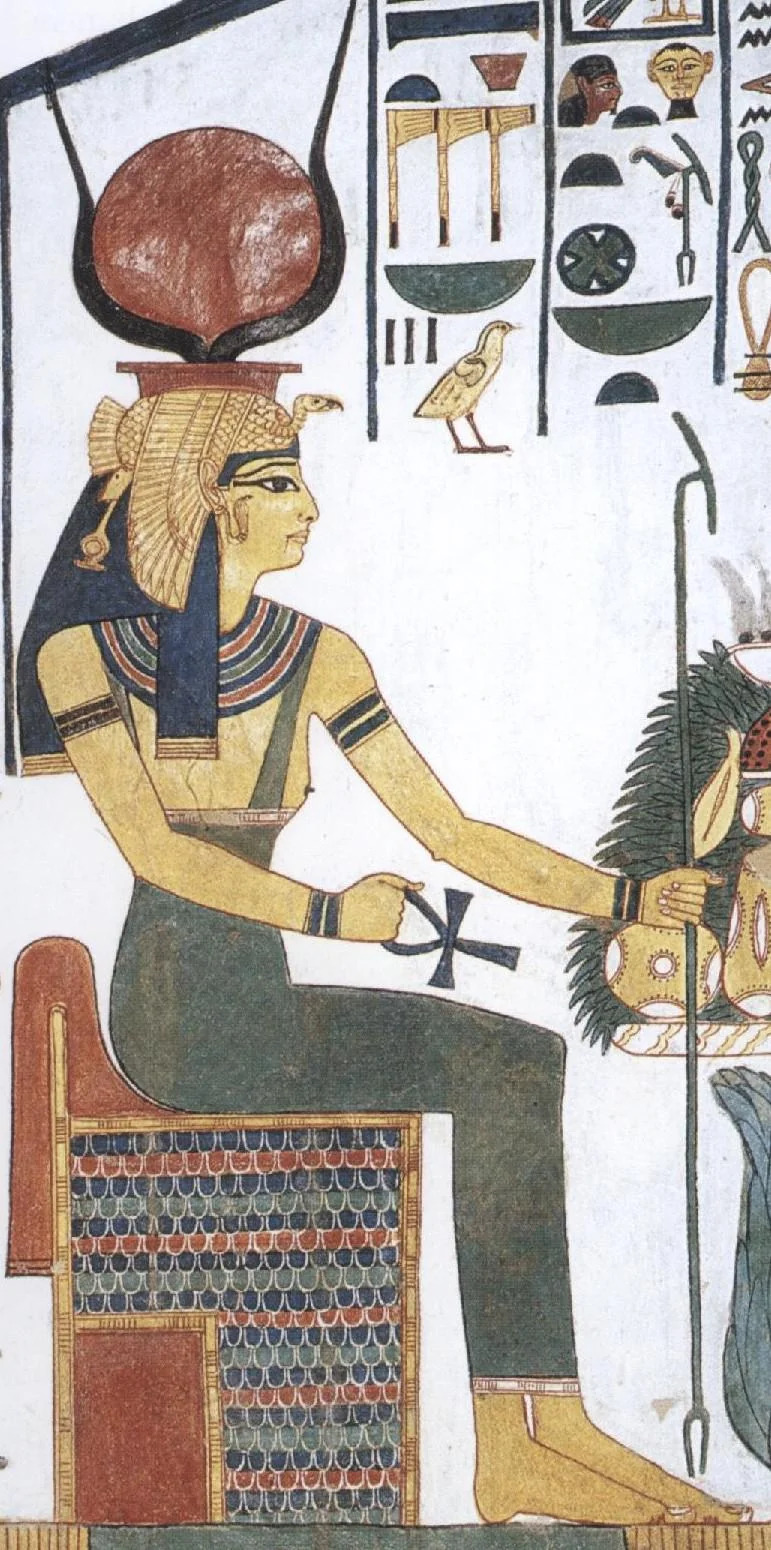
Hathor is understood to be the deity who welcomes the worthy dead, offers them refreshments of food and drink, and leads the way into the blessed beyond. One of the desires of the deceased was to be in the following of Hathor - "I tread the stars and climb the sunbeams in the retinue of Hathor, I rise to the sky."
Despite the Land of Shadows canonically existing, I believe that's just another realm where death manifests while the Lands Between represents another, and in a sense could be considered something like "the blessed beyond" for those granted her grace. It also explains how those like the Tarnished could be cast out and only permitted back once she returned the vision of grace to them.
Hathor's attributes as a mother goddess were exalted - it was she who gave birth to gods, shaped animals and people, and brought greenery into existence. Hathor repelled the shadows and illuminated all creatures with her light. The inundation of the Nile happened on her command, and the winds drew near on her orders.
Quite a literal parallel to both her removal of Destined Death and sealing away of the Land of Shadow, also bringing light to the land in the form of the golden shine of the Erdtree.
In one Egyptian tale, Hathor was charged by Ra to punish humankind. So great was the slaughter that Ra feared people would be wiped out, and ordered the goddess to halt. But blood-mad, she ignored him. These two aspects of Hathor - violent and dangerous versus beautiful and joyful - reflected the Egyptian belief that women, as the Egyptologist Carolyn Graves-Brown puts it, "encompassed both extreme passions of fury and love."
I hadn't expected to find something like this when first reading about Hathor but obviously this is reminiscent to how Marika lead her genocidal wars.
Hathor Sources [x]
Conclusion
This is all I plan to cover but there's a lot more I could have such as Apophis; gold, silver, and ivory; hair, braids, knots, and power; and so much more. But this is already super long so I encourage anyone interested to take a stab at looking into it yourself if you're curious. If you made it to the end, thanks for reading and let me know your thoughts!
#Elden Ring Lore#cinder rambles#long post tw#malenia blade of miquella#miquella the unalloyed#whatever i spent too much time on this i might as well put it in the tags#its also SO long like buckle up if you're going to read this#obviously not perfect parallels but there's enough that it made me go “HMM” and deep dive so here you go#if nothing else it's interesting food for thought
29 notes
·
View notes
Text
What species are the flowers in Fowler's fortress?
The flower with psychoactive pollen we see in episode 6 is probably entirely fictional, and not based on any specific plant. BUT Pondering over small, inconsequential details like this seems to have become my thing, so let's consider what it could be if it IS a real flower.
Based on its shape, the flower looks either like a waterlily or a lotus.
Fowler's indoor garden seems to be either directly above or otherwise near to the kitchen. Any water features such as fountains and ponds would need to be self-contained (to avoid leaking, or rotting the wooden beams between floors). Also, given how dimly lit the windowless garden is we can assume the flower blooms in the dark / nocturnally which actually narrows down which species of flower it could be considerably.
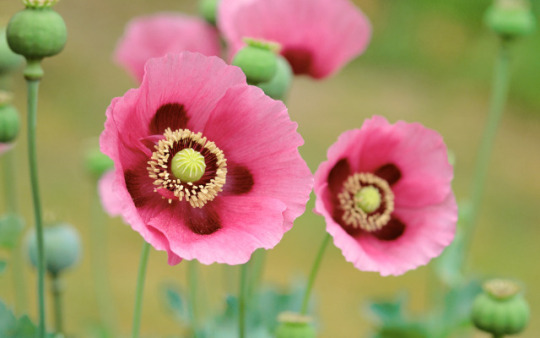
Now, originally I had assumed no waterlily or lotus is psychoactive so considered it might be a poppy instead, with the pink poppy looking the most similar to the flower in episode 6. The flowers we see are clearly growing singularly from the garden soil, rather than floating in water the way waterlilies and lotuses do. However, not only do these flower in full sun rather than nocturnally, it also turns out that there ARE psychoactive lotus flowers. Specifically Nelumbo nucifera or the blue lily flower and Nymphaea caerulea or the blue lotus, although these too bloom in the day and close up at night.
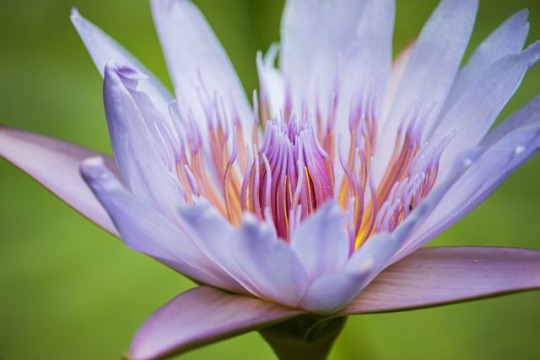
The broader taxonomy of Nymphaea nouchali / water lily has edible psychoactive roots (containing alkaloid aporphine).
It's pretty fitting for Fowler to cultivate a nocturnally blooming flower, given his crescent moon crest. Not sure if that crest is his or that of the Genghin clan, but he dons it all the same.
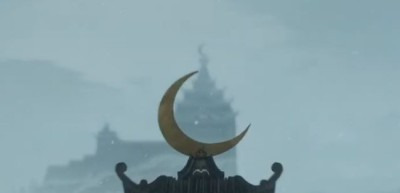

With all that being said, the psychoactive effects of the flower seem to stem (heh) from its pollen, not its petals as with Nelumbo nucifera. As it happens, there is a plant native to Japan which has psychoactive pollen containing "grayanotoxins" (named after Asa Gray from the 1800s. If Fowler talked about the plants it would be very anachronistic for him to use this term, so he probably wouldn't). These are a type of neurotoxin produced by the family Ericaceae (including the rhodedendron flower - not especially similar to Fowler's flower as they tend to grow in clusters with relatively smaller flower heads), with the different isoforms (structure variations) of the grayanotoxins each flower species produces varying the plant's toxicity. Whatever grayanotoxins are in Fowler's flowers' pollen act pretty quickly so are probably on the more potent end (so probably grayanotoxin III?)

"Mad honey" can be made from pollen contaminated with grayanotoxins, but the pollen itself is still psychoactive.
Overall, no specific existing flower species seems to perfectly fit Fowler's flowers. Lotus look the closest but don't grow in the conditions shown in the show and have psychoactive roots rather than the psychoactive pollen of rhodedendron flowers. If any BES fans are botanists or specialise in plants / environmental science / botany / related sciences, I'd love to hear what you know and think would be more appropriate candidates!
#blue eye samurai#abijah fowler#abijah blue eye samurai#Post didn't show up on the tags for some reason so fiddled around with it until it did#Another tangent about details that don't matter but brainrot got me good#Tempted to plant some blue lotuses and rhodedendrons now#botany#plants
40 notes
·
View notes
Text

Running among the Lillies
#my art#seth egyptian god#set egyptian god#suetekh#sutekh#ancient egypt#egyptian#egyptology#ancient history#egyptian gods#blue lily#blue lotus#egypt#nymphaea caerulea#egyptian blue lotus#egyptian mythology#kemetic spirituality#kemet#kemetic#kemetism#ancient kemet#artist on tumblr#artists on tumblr#digital art#digital aritst
38 notes
·
View notes
Text

The oldest direct evidence of water lilies being used as a psychoactive drug dates to 6,000 BCE in ancient Egypt. The specific species was Nymphaea nouchali var. caerulea which has been found to contain nuciferine, an alkaloid normally found in lotuses (Nelumbonaceae), as well as other aporphine alkaloids that may covert to apomorphine in the body. Water lilies are soporific aka hypnotic. Hypnotic herbs are anti anxiety and help people fall asleep and stay asleep.
Source: “The oldest archeological data evidencing the relationship of Homo sapiens with psychoactive plants,” Journal of Psychedelic Studies, 2019.
Photo: Egyptian blue water lily (Nymphaea nouchali var. caerulea) from Wikimedia Commons.
#bane folk#blue lotus#Egyptian blue water lily#water lily#nymphaea#nymphaea caerulea#nymphaea nouchali var caerulea#nymphaeaceae#medicinal plants#poisonous plants#edible plants#psychoactive plants#soporific#hypnotic#sedative#folk medicine
16 notes
·
View notes
Text

Bowl with Fish and Lotuses
Egyptian, ca. 1550-1400 BCE (New Kingdom, early 18th dynasty)
These vessels (sometimes described as "marsh bowls") are typically embellished with aquatic imagery with allusions to fertility, such as tilapia fish, lotuses, papyrus umbels, buds on stems, and pools of water. The bright blue of faience, as well as the aquatic motifs adorning these bowls is associated with the life-giving qualities of cool, fresh water. The blue lotus (Nymphaea caerulea), and the tilapia fish (Tilapia nilotica) are emblematic of such imagery. Here, two fish carry lotus stems with buds and opened blossoms in their mouths. The ornamentation relates to the powerful themes of rebirth and regeneration.
31 notes
·
View notes
Text
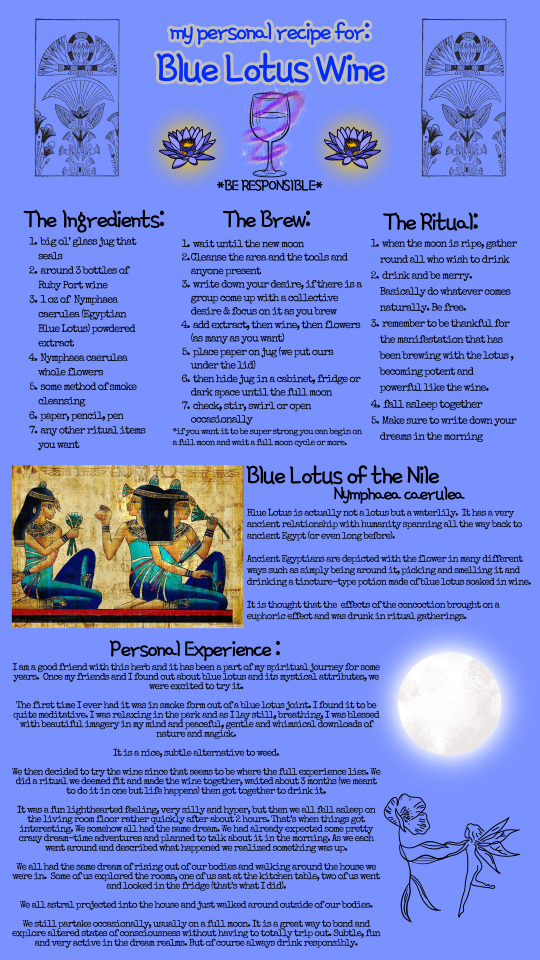
Nymphaea caerulea.
Mystical Egyptian Blue Lotus Wine: a Potent, Magickal Elixir.
#magick#blue lotus#potions#elixir#herbalism#witchcraft#witchblr#ancient egypt#egyptology#astral projection#recipes#sorceress#coven#digital art#infographic#wine#peace#love#magic
15 notes
·
View notes
Text
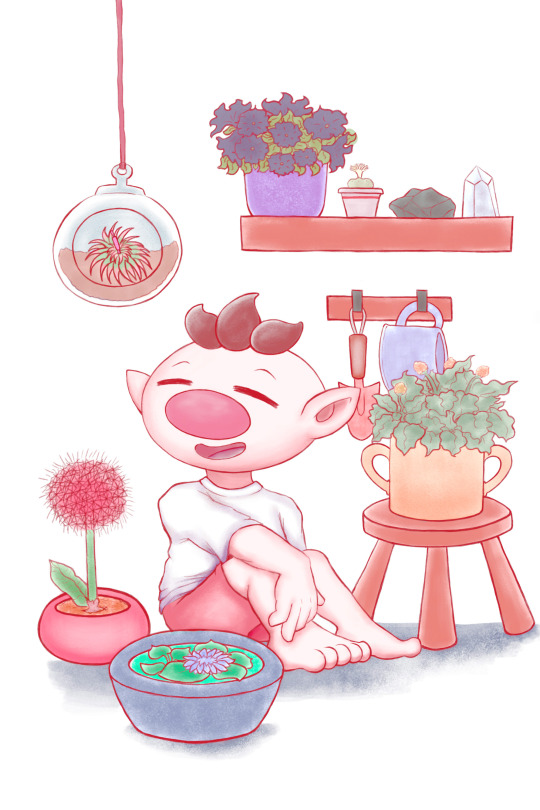
"Far from eachother, but never apart."
Plants references from left to right: Scadoxus multiflorus, Nymphaea caerulea, Acmella oleracea, Petunia, Lophophora williamsii.
The two rocks are a obsidian and crystal quartz. Two rocks that are consider beneficial for the garden (at least that's what gardening blogs told me).
#pikmin#pikmin fanart#captain olimar#pikmin 4#i forgot glow pikmin#but this is a morning ambiance so he would not have business being here#my art
29 notes
·
View notes
